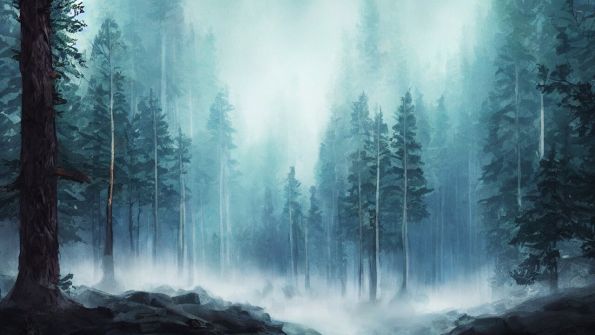Difference between revisions of "Taiga (range)"
Tao alexis (talk | contribs) |
Tao alexis (talk | contribs) |
||
| Line 1: | Line 1: | ||
| − | [[File:Taiga (range).jpg|right| | + | [[File:Taiga (range).jpg|right|595px|thumb|]] |
'''Taiga''', also known as a "boreal forest," is a vast wooded landscape that blankets the northern regions of the world, distinguished by a dense canopy of coniferous trees, like spruce, pine, and fir, which have adapted to the harsh environment with their needle-like leaves and sturdy trunks. Beneath the trees lies a a rich undergrowth, consisting of a thick layer of decomposing pine needles and leaves. Amidst this carpet are low-lying vegetation such as blueberry bushes, lingonberries, and ferns, serving as crucial food sources for the diverse wildlife | '''Taiga''', also known as a "boreal forest," is a vast wooded landscape that blankets the northern regions of the world, distinguished by a dense canopy of coniferous trees, like spruce, pine, and fir, which have adapted to the harsh environment with their needle-like leaves and sturdy trunks. Beneath the trees lies a a rich undergrowth, consisting of a thick layer of decomposing pine needles and leaves. Amidst this carpet are low-lying vegetation such as blueberry bushes, lingonberries, and ferns, serving as crucial food sources for the diverse wildlife | ||
__TOC__ | __TOC__ | ||
Revision as of 17:13, 3 October 2023
Taiga, also known as a "boreal forest," is a vast wooded landscape that blankets the northern regions of the world, distinguished by a dense canopy of coniferous trees, like spruce, pine, and fir, which have adapted to the harsh environment with their needle-like leaves and sturdy trunks. Beneath the trees lies a a rich undergrowth, consisting of a thick layer of decomposing pine needles and leaves. Amidst this carpet are low-lying vegetation such as blueberry bushes, lingonberries, and ferns, serving as crucial food sources for the diverse wildlife
Contents
The soil is typically acidic and nutrient-poor, owing to the cold climate and slow decomposition process. This results in sandy or loamy soil that retains moisture, making it challenging for a wide variety of plants to thrive.
The taiga experiences harsh weather conditions, including cold winters with heavy snowfall. Navigating through deep snowdrifts can be physically demanding and exhausting. Additionally, the weather can change rapidly, increasing the risk of exposure to the elements. Winters are long and brutally cold, with temperatures that produce polar conditions as cold as the heart of Antarctica.
Conditions
The atmosphere can be one of stark natural beauty. The air is crisp, often carrying the distinct aroma of pine resin and the earthy scent of the forest floor. During the summer months, the forest resonates with the sounds of buzzing insects and the songs of birds. In contrast, the winter months envelop the taiga in silence, broken only occasionally by the rustling of wildlife or the creaking of snow-laden branches.
Travel is immensely difficult due to the intermingling of coniferous branches that form a picket, with a forest floor covered by a layer of deadfall that makes walking treacherous. Muskeg forms large waterlogged areas, with soft and spongy ground and pockets of standing water or mud. Visibility is difficult, so that much of the time even the sun cannot be seen, increasing the risk of becoming disoriented.
The dense woods provide valuable timber for shelter and firewood, while the forest's wildlife offers a crucial source of sustenance and materials for clothing and trade. The principle denizens in the game world are non-humans, especially goblinish races, who have adapted and dwelt in much of the Old World's taiga for millennia.
